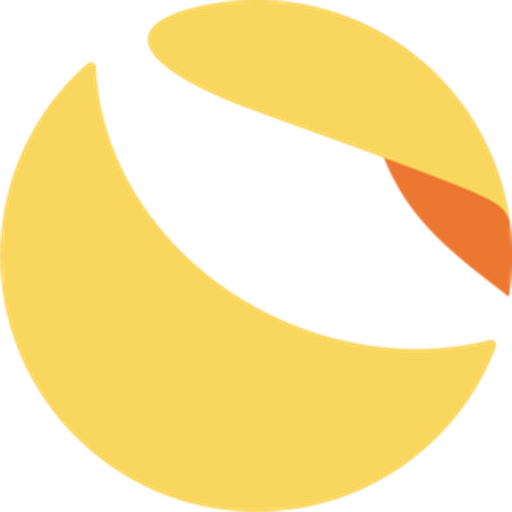Terra Luna Classic vs BlackRock USD Institutional Digital Liquidity Fund – Price, Market Cap & Performance Compared
Which coin performs better – Terra Luna Classic or BlackRock USD Institutional Digital Liquidity Fund?
We compare the current price (0.00006 $ vs 1 $), market cap (347 099 615 vs 2 390 501 568) and all-time high (119.18 vs 1).
Find out which one stands out right now!
Terra Luna Classic is currently trading at 0.00006 $, while BlackRock USD Institutional Digital Liquidity Fund stands at 1 $. These cryptocurrencies differ not only in price but also in market presence.
The market cap of Terra Luna Classic is around 347 099 615, and BlackRock USD Institutional Digital Liquidity Fund has about 2 390 501 568. Their respective all-time highs are 119.18 for Terra Luna Classic and 1 for BlackRock USD Institutional Digital Liquidity Fund.
Daily trading volume and the 24h price change (6.46506 % vs ) also offer key insights.
Compare all metrics now and see which coin fits your investment strategy best!
Terra Luna Classic
Terra Luna Classic represents a significant chapter in the history of cryptocurrency, having evolved from its original form after a challenging market event. The project aims to maintain its community-driven ethos while focusing on providing a robust platform for decentralized applications. Its ongoing development strives to restore trust and innovation, with an emphasis on integrating sustainable and efficient protocols.
more informationBlackRock USD Institutional Digital Liquidity Fund
The BlackRock USD Institutional Digital Liquidity Fund represents a significant step in the integration of traditional finance and digital assets, targeting institutional investors seeking stability in a volatile market. By leveraging blockchain technology, this fund aims to enhance liquidity management and provide a secure, transparent investment avenue. As larger financial institutions increasingly embrace digital currencies, the BlackRock fund may symbolize a new era of institutional-grade crypto assets.
more information

|

|
|
|
|
General Information |
|
|---|---|
|
Title
Terra Luna Classic
|
Title
BlackRock USD Institutional Digital Liquidity Fund
|
|
Symbol
lunc
|
Symbol
buidl
|
|
Whitepaper
|
Whitepaper
-
|
|
Website
|
Website
|
|
Community
-
|
Community
-
|
|
Last Updated
2025-08-22 23:29
|
Last Updated
2025-08-22 23:25
|
Price Data |
|
|---|---|
|
Current Price $
0.00006 $
|
Current Price $
1 $
|
|
High 24h
0.00006 $
|
High 24h
1 $
|
|
Low 24h
0.00006 $
|
Low 24h
1 $
|
|
Price Change 24h
0.00000 $
|
Price Change 24h
-
|
|
Price Change % 24h
6.46506 %
|
Price Change % 24h
-
|
Market Data |
|
|---|---|
|
Market Cap
347 099 615
|
Market Cap
2 390 501 568
|
|
Total Volume
11 756 873
|
Total Volume
-
|
|
Market Cap Change 24h
20 774 031
|
Market Cap Change 24h
269 096
|
|
Market Cap Change % 24h
6.36604 %
|
Market Cap Change % 24h
0.01126 %
|
|
Return on Investment (ROI)
-
|
Return on Investment (ROI)
-
|
Supply and Availability |
|
|---|---|
|
Circulating Supply
5 503 439 262 820
|
Circulating Supply
2 390 501 568
|
|
Total Supply
6 490 897 115 606
|
Total Supply
2 390 501 568
|
|
Max Supply
-
|
Max Supply
-
|
Historical Data |
|
|---|---|
|
All Time High (ATH)
119.18
|
All Time High (ATH)
1
|
|
ATH Change %
-99.99995 %
|
ATH Change %
-
|
|
ATH Date
2022-04-05 12:24
|
ATH Date
2025-02-12 05:00
|
|
All Time Low (ATL)
0.00000
|
All Time Low (ATL)
1
|
|
ATL Change %
6 203.05867 %
|
ATL Change %
-
|
|
ATL Date
2022-05-13 02:34
|
ATL Date
2025-02-12 05:45
|
Terra Luna Classic
Introduction to Terra Luna Classic
Terra Luna Classic, often referred to simply as "LUNC," has been a significant player in the world of cryptocurrencies. As a version of Terra that predates various forks and updates, Luna Classic represents an interesting case study of what happens when a blockchain network undergoes substantial changes. In this article, we’ll explore its history, current status, and future potential.
A Brief History of Terra Luna Classic
Originally, Terra Luna was launched as a major protocol aiming to combine the price stability and wide adoption of fiat currencies with the censorship-resistance characteristic of cryptocurrencies. This was achieved through an algorithmic stablecoin model. However, an eventful day in May 2022, marked by the all-time high just a month earlier, saw LUNC plummeting to significant lows.
The crash, often attributed to flaws in the algorithmic model and external market pressures, forced the Terra community to re-evaluate and restructure, leading to a division between newer iterations of the network and the "Classic" version that persisted. As of now, the community maintains support for LUNC, allowing it to survive in niche market roles.
The Pros and Cons of Terra Luna Classic
Advantages
One of the key advantages of Terra Luna Classic is its established community. Despite the hardships faced in 2022, a core group of developers and investors remains committed, ensuring continuous development and updates.
Additionally, LUNC’s price recovery from the same year’s low speaks to its resilience. The coin has experienced substantial growth in percentage terms from its all-time low, regaining some investor confidence.
Challenges
However, Terra Luna Classic also faces substantial challenges. Chief amongst them is the loss in trust experienced by many investors and traders during the crash. This has impacted its market cap significantly, a factor further compounded by robust competition from other stablecoin and DeFi projects.
Moreover, the crypto’s technical model required significant re-evaluation, as purely algorithmic stable coins, such as the one Terra initially planned, have now fallen under suspicion. The necessity for new models or hybrid approaches is evident.
Market Performance and Technical Indicators
Terra Luna Classic has had a volatile market performance. From an all-time high of $119.18, the coin’s current valuation stands dramatically lower but fluctuated from nearly 90% upwards off its all-time lows.
This volatility is reflected in its 24h high and low, with a close inspection of the market cap movements showcasing an area for potential speculation but also a warning for risk-averse investors.
Future Prospects of LUNC
The future of Terra Luna Classic will largely depend on its ability to innovate and rebrand itself as a solution beyond its problematic past. It must harness the potential within its community and build upon the lessons learned during one of the most infamous crashes in cryptocurrency history.
If LUNC can effectively demonstrate a sound business model and a valuable use case in the wake of evolving DeFi trends, it may well position itself for a comeback. The increasing need for stable, transparent, and scalable solutions within the cryptocurrency ecosystem could potentially leverage LUNC for future success.
Conclusion
In summary, Terra Luna Classic’s journey is a testament to the unpredictable and rapidly evolving nature of cryptocurrency markets. While it offers a historical insight into the challenges of maintaining algorithmic stability and community trust, it also underscores the importance of adaptability and innovation in sustaining relevance. For investors and enthusiasts, keeping an eye on LUNC’s developments could yield intriguing insights as the industry moves forward.
BlackRock USD Institutional Digital Liquidity Fund
Introduction to the BlackRock USD Institutional Digital Liquidity Fund
The BlackRock USD Institutional Digital Liquidity Fund, represented by the symbol "buidl," has emerged as a significant player in the cryptocurrency landscape. This fund offers a unique solution for institutional investors seeking to tap into the potential of digital assets while maintaining a stable value. It has gained attention for its promise of liquidity and is backed by the extensive experience of BlackRock, one of the world's largest asset managers.
Understanding the Fundamentals
The BlackRock USD Institutional Digital Liquidity Fund operates with a current price pegged at $1, reflecting its goal of providing stability for investors. As of now, the fund has a market cap of approximately $399.7 million with a circulating supply that matches its total supply. This tight coupling of supply ensures that the value of "buidl" remains stable, making it an attractive option for liquidity management in the digital asset space.
Pros of Investing in BlackRock USD Digital Liquidity Fund
There are several advantages to investing in the BlackRock USD Institutional Digital Liquidity Fund:
- Stability: With its price pegged to $1, it minimizes the volatility typically associated with cryptocurrencies.
- Institutional Backing: Being backed by BlackRock provides credibility and trust for investors.
- Liquidity: The fund is designed for seamless transactions, making it easy for investors to enter and exit positions.
- Market Accessibility: It opens doors for institutional investors who are looking for exposure to digital assets without the inherent risks.
Cons and Challenges Ahead
However, there are potential drawbacks to consider:
- Limited Growth Potential: A stablecoin-like structure may not provide significant capital appreciation opportunities.
- Regulatory Scrutiny: As governments and financial institutions move to regulate digital currencies, funds like "buidl" may face challenges in compliance and operational adjustments.
- Market Competition: The space is crowded with other digital liquidity solutions, which may spur competition and impact market share.
Historical Performance Review
Since its inception, the BlackRock USD Institutional Digital Liquidity Fund has seen consistent value maintenance with a notable achievement of an all-time high of $1 and an all-time low of $1, both occurring on February 12, 2025. This stability highlights the fund's design and operational effectiveness.
Future Outlook
Looking ahead, the future of the BlackRock USD Institutional Digital Liquidity Fund appears cautiously optimistic. As institutional interest in cryptocurrencies continues to grow, funds like "buidl" can play a crucial role in providing liquidity solutions. However, it remains essential to monitor regulatory developments and market dynamics closely, as these factors will significantly influence the fund’s potential growth and adaptation in the evolving landscape of digital assets.
Conclusion
The BlackRock USD Institutional Digital Liquidity Fund presents an intriguing opportunity for institutional investors. While it boasts inherent stability and liquidity, its growth prospects may be tempered by its conservative structure and external market forces. As such, potential investors should weigh the benefits against the risks in this unique investment landscape.

